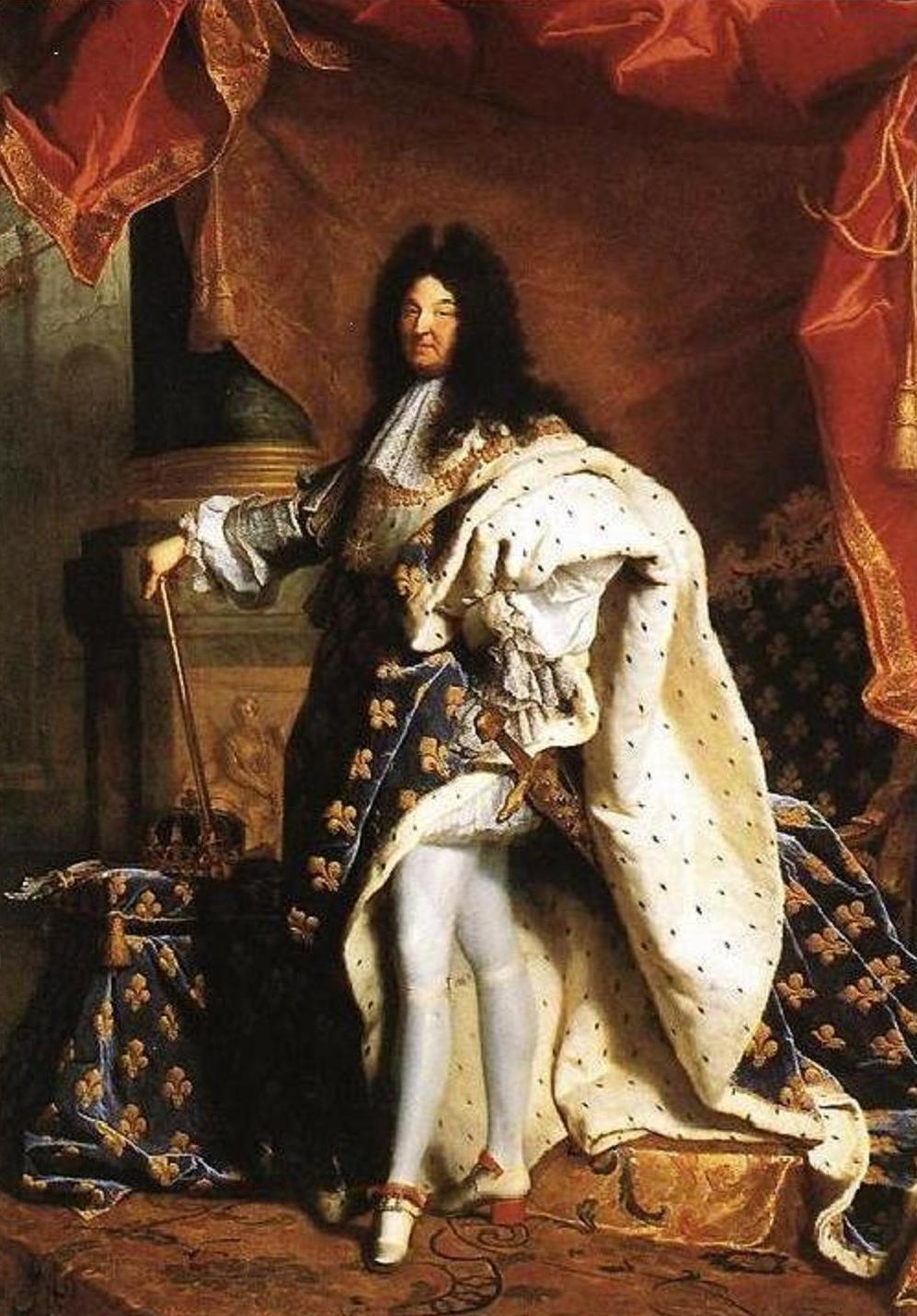Initially associated with the concept of image transmission to future generations, the portrait always played an important social role. Portrait can sit the social position of a character. It used to be a tool of propaganda: kings sent their portraits in the provinces and regions, to show their omnipresence.
Portrait could compensate for the absence and distance; in fact during engagement, the bride and groom met each other through a portrait. Portrait is a souvenir for the family who will transmit it to future generations.
 Louis XIV par Hyacynthe Rigaud, 1702
Louis XIV par Hyacynthe Rigaud, 1702
By definition, a portrait is a painting, photograph, sculpture, or other artistic representation of a person, in which the face and its expression is predominant. The intent is to display the likeness, personality, and even the mood of the person.
The seventeenth century portrait embodies the relationship between the individual and the state: court portrait in the monarchies of France, England and Spain, bourgeoisie class portrait in Holland ...
In France, the severe portrait of the first half of the seventeenth century gave way to a more opulent portrait.
In the early seventeenth century, we must rebuild the nation after the Wars of Religion damages ...
 Marie Adélaide en Diane Chasseresse par Jean Marc Nattier, 1745
Marie Adélaide en Diane Chasseresse par Jean Marc Nattier, 1745
In the middle of the seventeenth century, the portrait become more official with ceremonial effigies of great dignitaries of the regime ...
In the second half of the seventeenth century, wigs, drapes and splendor of Versailles is reflected in portraits by Mignard, Hyacinthe Rigaud and Nicolas de Largilliere.
Louis XIV end of reign is characterized by portrait painters such as Francois de Troy, Nicolas de Largilière and Hyacinthe Rigaud.
The transition to the eighteenth century is announced by a growing taste for movement and bright colors. Portraiture will change during the Enlightenment period "siècle des lumières". Lightness, elegance and fantasy appear such as the mythological portraits of the ladies of France by Jean Nattier.
 Madame de Pompadour, Pastel par Maurice Quentin de la Tour, 1755
Madame de Pompadour, Pastel par Maurice Quentin de la Tour, 1755
Increasingly the use of a neutral background gives a more relaxed and more intimate face to portrait. The oval shape is widely used. One enters the privacy of apartments, like in some portraits of Madame de Pompadour.
The psychological analysis is increasingly sought and worked. Thus the artist concentrates on the face, expressions, eyes and smile. Large pastel, such as Maurice Quentin de la Tour, Jean-Baptsite Perronneau use symbols: books, compasses, pen, ink to describe the origins and activities of the portrayed.
In the second half of the XVIIIth century, the genre was developed by artists like Chardin and Greuze. The era marked by the ideas of Jean Jacques Rousseau, gave birth to a current sentimental flourishes stamped with portraits of softness and femininity such as the one by Elisabeth Vigee Lebrun.
 Madame Vigée Le Brun, autoportrait avec sa fille, 1786
Madame Vigée Le Brun, autoportrait avec sa fille, 1786